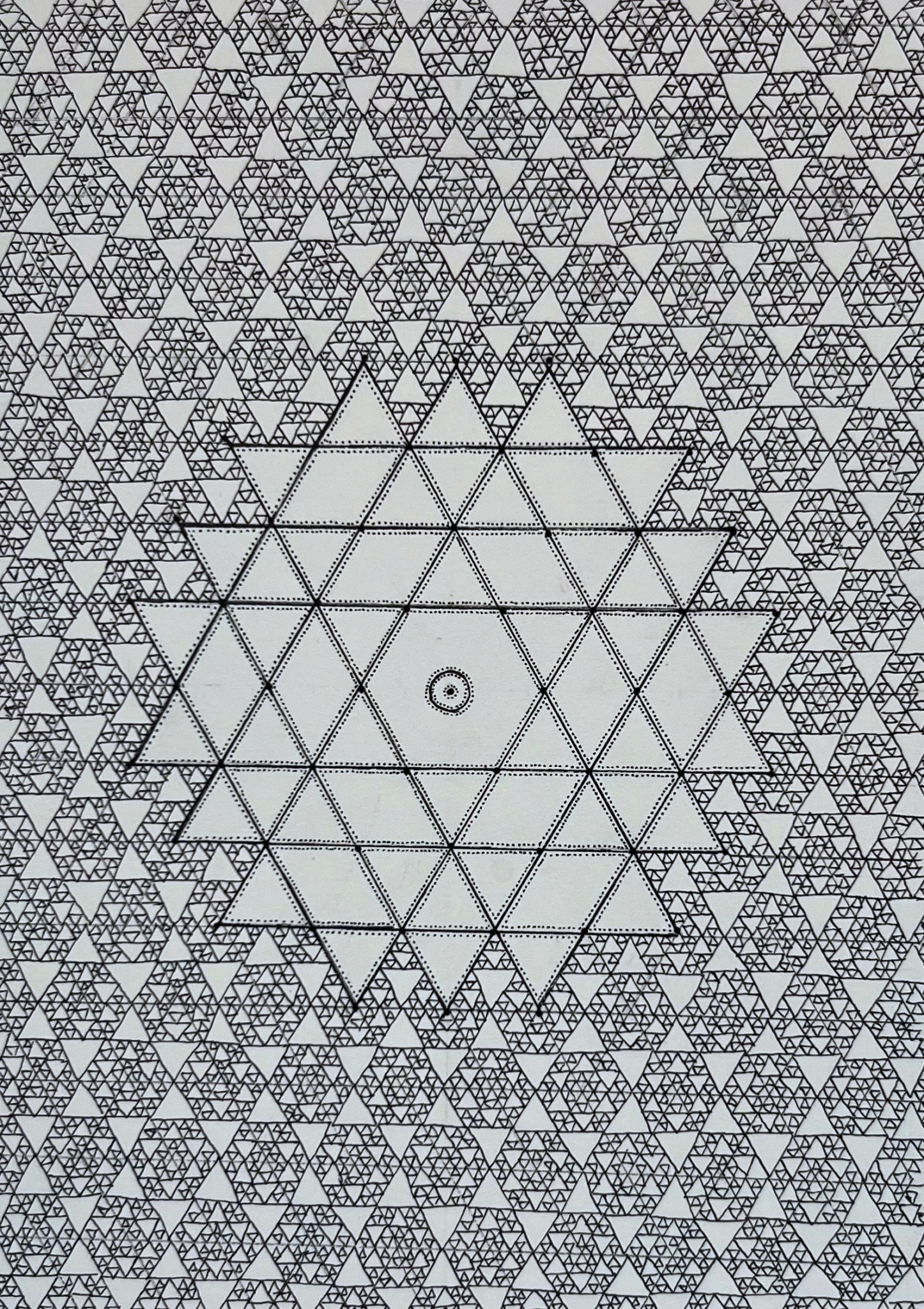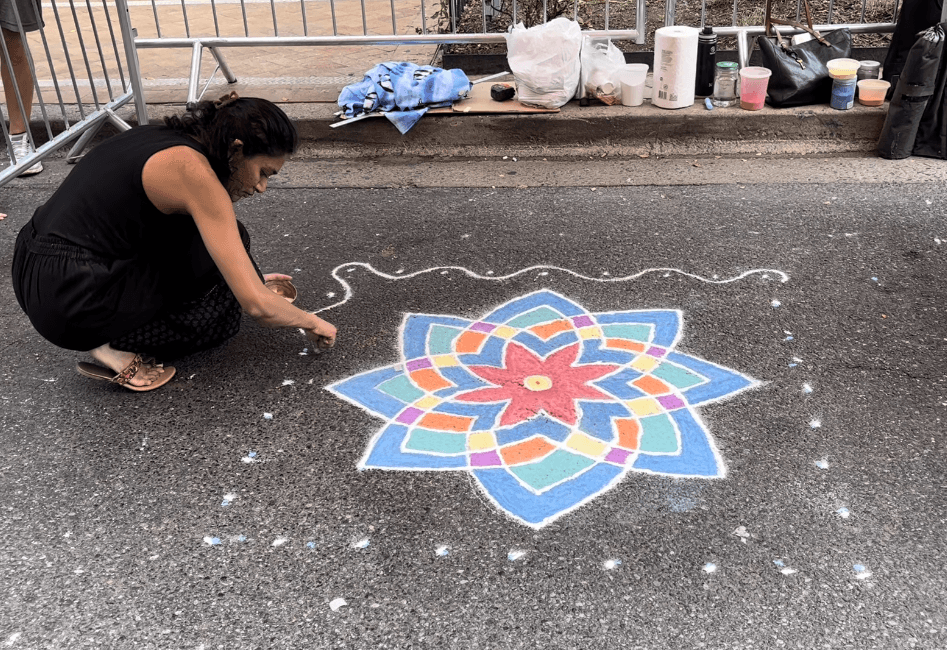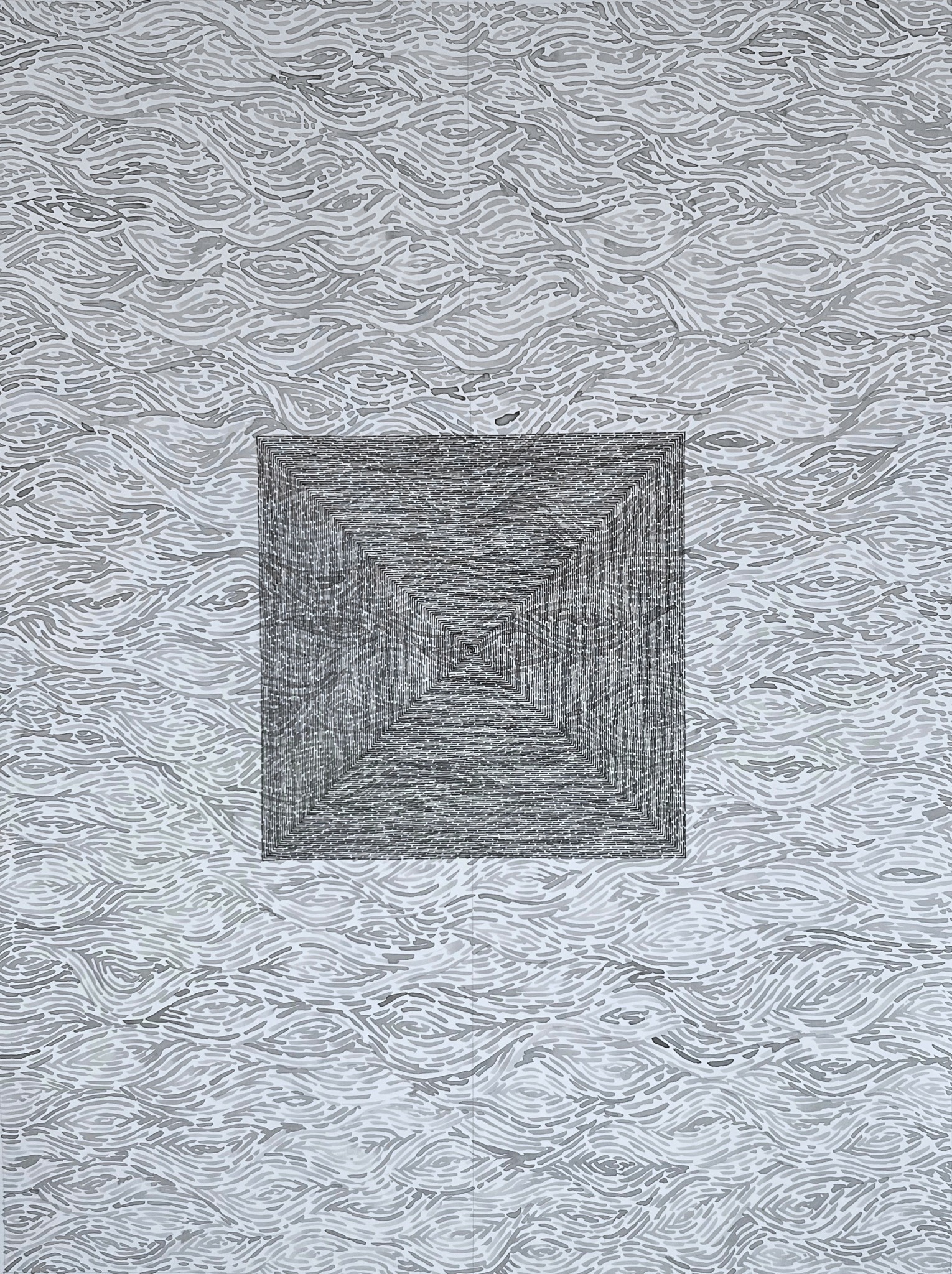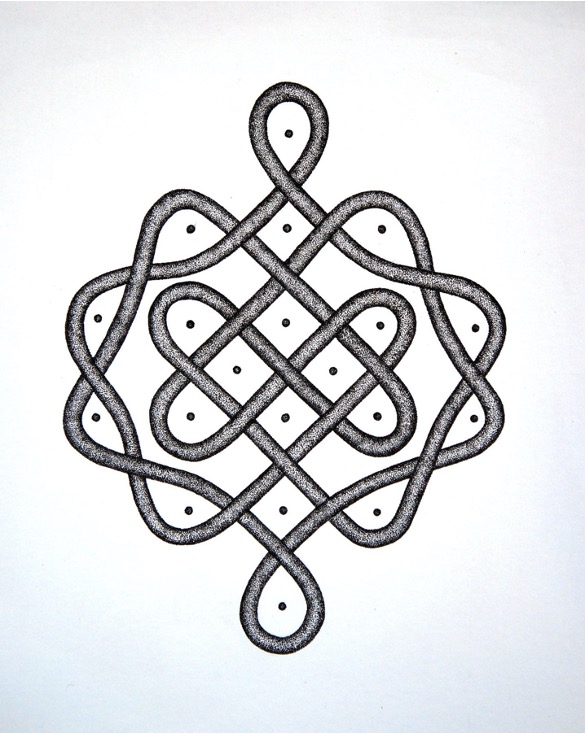We caught up with the brilliant and insightful Aishwariya Chandrasekar a few weeks ago and have shared our conversation below.
Alright, Aishwariya thanks for taking the time to share your stories and insights with us today. We’d love to hear about a project that you’ve worked on that’s meant a lot to you.
The most meaningful project I’ve worked on was an exhibition that I organized and curated, called Thalaimuraigal: Three Generations of Kolam in 2022. It showcased the artwork of my grandmother, Saroja Manickam, mother, Shanthi Chandrasekar, and myself, inspired by a traditional art form called kolams.
Kolams are dot and line drawings made with rice or rock powder by women in front of their households every day in India, and are traditionally taught by women to their daughters. Kolams are often made with impermanence as an inherent part of the process – since they are made with a powder, they do not tend to last as people walk over them, birds and insects will eat the rice powder, and the elements will disrupt them. Even though I grew up in the United States, I have been surrounded by kolams for so much of my life that they intrinsically sank into my aesthetic and artistic vocabulary from a young age. My mom says that one of my first drawings as a small child was filled with dots and lines that was reminiscent of kolams. As a first-generation Indian-American, it has always been a way to find and understand myself. My mom, Shanthi Chandrasekar, is practicing artist and together we have received grants from the Maryland State Arts Council for her to teach me kolams and provide training so that I can continue to practice and share the art form.
When the COVID-19 pandemic started in 2020, the three of us were each living in different countries – I was in London for studying for my Master’s degree, my mom was in the United States, and my grandmother was in India. In the midst of social isolation and rapidly changing circumstances, all three of us found ourselves finding comfort in creating kolams – but with different mediums, interpretations, and processes. Over the years, my grandmother began to incorporate kolams into her embroidery; my mom painted, drew, and incorporated the motifs throughout her artistic creations; and I explored kolams through black and white drawings. We all brought different interpretations into our work as well, the simplicity of the art form allowing for us to bring own philosophies, life experiences, and interests into the tradition.
Once I returned back to the United States, I had the idea to exhibit our kolam-inspired artwork across the three generations to showcase the tradition, our individual interpretations, and the connection it provided. With the support of a Maryland State Arts Council grant and the Gandhi Memorial Center, I was able to bring the exhibition to fruition. It was a special moment to have our artistic creations, commonly inspired but divergent by creative process and identity, sit side by side – and it was my grandmother’s first time exhibiting her artwork! It was meaningful to me to create a space of intergenerational connection that intersected between time, space, and culture, in a way that made me feel close to my mom, grandmother, ancestors, and the many generations of women before us who have sustained this tradition.
Personally, the exhibition and the exploration of kolams that resulted has had a significant impact on my journey in the arts. Over the years, my kolam-inspired artwork has focused on the exploration of their fractal nature and the relationship between the part and the whole in the actual patterns themselves, the materials, and the process of creation and sustaining a traditional art form, through stippling and repeating patterns. Philosophically, it has also been also one of the inception points for my next artistic exploration in abstract embroidery and pen & ink drawings, which explores ephemerality, reckoning with my place in the world, focusing attention to the details, and finding tiny joys in challenging times.

Awesome – so before we get into the rest of our questions, can you briefly introduce yourself to our readers.
I’m a visual and traditional artist working primarily with pen & ink drawings and abstract embroidery. I have an interdisciplinary educational background, which includes psychology, business management, neuroscience, and social anthropology, all of which are part of my exploration of human behavior from the microscopic to the macroscopic scale. This background influences my art, as I explore my reflections and musings on what it means to be an individual in a complex world, finding meaning in the mundane, and creating moments of self-discovery and joy through the process of creating. I find it to be an introspective and reflective process and tend to feel the most connected to the human experience when engaging in creative acts.
In my drawings and embroidery, I use small, repetitive components such as lines, dots, and other marks, to explore the generativity and tension between them when amassed, layered, and overlapped. The process of making individual stitches, watching ink pigment settle, drawing lines, and seeing patterns emerge is my attempt to create impressions of the simplicity and complexity that surrounds us. I find inspiration everywhere around me – whether it’s through watching the way the water moves, trying to make sense of life, or through the process of creating itself.
Alongside visual art, music also plays a significant role in my life and is a huge inspiration for my creativity. I’m now working on incorporating it more into my creative practice which has felt surprisingly natural. I’ve played several instruments over the years, but am currently focusing on piano and guitar.

Can you tell us about a time you’ve had to pivot?
One pivot I made was when I was returning from London, having just completed my Master’s degree in the middle of the pandemic, and had applied to and gotten rejected from PhD programs. I was scrambling to figure out what my next step would be, since that was the future I had envisioned and planned for at that time. I had to consider how I could turn this outcome into an opportunity – how could I use this moment to pursue something different? I realized that something I’d always put to the side was the arts – it was something I loved but hadn’t taken intentional steps towards in my career. It was the perfect moment to turn what could have been a really disappointing time into something that felt fresh, exciting, and aligned with my values and interests. I now work professionally in the arts space, while also working as a practicing artist, and am always really grateful that I gave myself that moment to make a choice. I’ve had to learn how to lean into the pivot – and all of the magical potential of being able to do so – while also learning hard lessons about the importance of staying centered and grounded enough to do so without compromising my mental and physical health.

For you, what’s the most rewarding aspect of being a creative?
The most rewarding part of being an artist and working in creative spaces is getting to witness and be a tiny part of the legacy of humanity’s creative potential. I learn so much about myself through the process of creating, and it feels like a deep self-excavation that makes me feel connected to people around me and the generations that have come before me, and reminds me to be present and mindful of the moments that I get to experience.
Contact Info:
- Website: https://www.aishwariyac.com
- Instagram: @aishwariya.chandrasekar



Image Credits
Tony Ventouris Photography
Artwork Credit for Thalaimuraigal Photo: [Left] – Saroja Manickam; [Middle] – Aishwariya Chandrasekar; [Right] – Shanthi Chandrasekar


